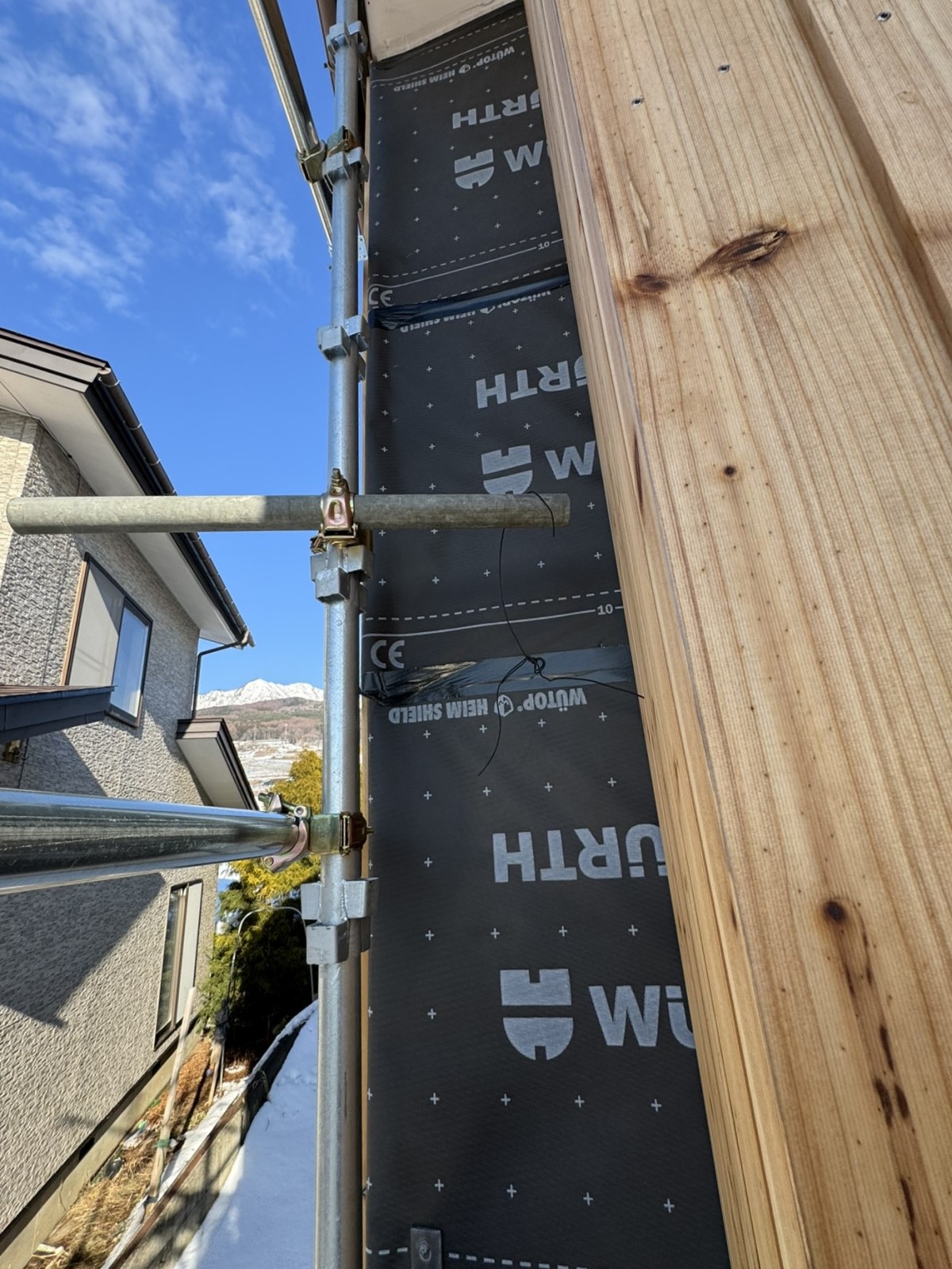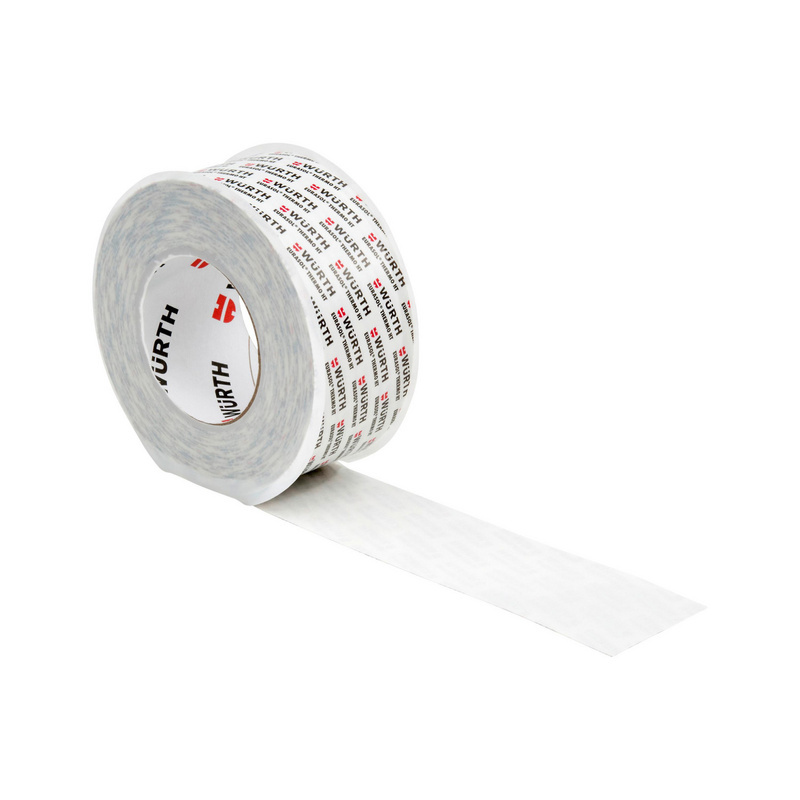"Creating Warm and Comfortable Homes with Swiss Craftsmanship and Würth Building Materials"
Jean-Michel Kenichi (hereafter "Kenichi"), a carpenter who moved from Switzerland to the foothills of Nagano mountains about two years ago, completed his vocational training in furniture and interior joinery at a vocational school while working on-site in Switzerland, followed by years of experience in furniture making and interior work. Currently, he's applying his Swiss-acquired knowledge to homebuilding in Japan.
After moving to Nagano, his first impression was that houses were "just too cold!" He's currently renovating an old traditional house built by his girlfriend's grandfather, replacing both exterior walls and interior finishes. When they removed the walls, they found the original insulation was completely black with mold! Though he had expected issues, he hadn't anticipated this extent. He decided to transform this cold house into a warm, durable home using insulation techniques he learned in Switzerland, which has a climate somewhat similar to Nagano.
His girlfriend's father, who runs a local construction company, initially didn't pay much attention to insulation. Now, inspired by Kenichi's knowledge, he comes to the site every day to learn Kenichi's techniques.
While Switzerland mainly uses cellulose, wood fiber, rock wool, and glass fiber for insulation, Kenichi chose cellulose for this project. He was initially shocked to see spray foam insulation commonly used in Japanese construction sites, as it's illegal in Switzerland due to difficulties in separation during demolition. He often wishes Japan would adopt more environmentally friendly and durable building materials.
He notes that there's a common misconception in Japan that substantial wall insulation isn't necessary in relatively mild winters. However, considering that most people use air conditioning to cool their homes during Japan's hot summers, he believes proper insulation and airtightness are absolutely essential for both condensation prevention and energy efficiency.
Among Würth Japan's products, he particularly recommends their screws! In Switzerland, Würth's "ORSY" storage systems stocked with Würth screws were commonplace at construction sites with regular replenishment. We were delighted to learn that German Würth screws are considered the gold standard in Switzerland.
Local supplier Gozu Building Materials provides lumber and other materials. Kenichi describes Gozu as an advisor who's always ready to consult about other Würth products.
He pays special attention to inspection hatches, crafting high-performance gaskets by hand rather than using pre-made products to achieve both airtightness and insulation. His thoroughness extends to applying Würth's Eurasol tape to each staple.
For foundation work, styrofoam, commonly used in Japan, is often employed, with wall thickness typically reaching 300mm. Kenichi is currently interested in Pavatex wood fiber insulation. This environmentally friendly material with excellent moisture control properties adapts surprisingly well to Japan's hot and humid climate, enabling comfortable indoor environments.
While Japan's construction industry tends to "work with given materials and methods," Kenichi creates truly comfortable living spaces by selecting and combining optimal materials from around the world, utilizing his Swiss-trained techniques and experience.
"Japan's housing industry still has plenty of room for improvement. I often see construction sites where I think 'This way of building will result in cold houses!' but I hope understanding of insulation and materials will gradually spread," says Kenichi. Believing that "warming up" the entire industry will lead to better homebuilding, he plans to focus on renovation projects going forward. Please experience Kenichi's warm homes for yourself at upcoming open houses!
Photo captions:
- Title Image - left. Kenichi enjoying Japanese seasons, spending weekends hiking in summer and skiing in winter
- Title Image - right. A meditation room-like space utilizing Würth products throughout
- 1. Waterproofing with Heimshield
- 2. Using Würth screws, of course! Beautiful wooden walls without any splitting
- 3. Custom-made frame and gasket: An inspection hatch focused on airtightness
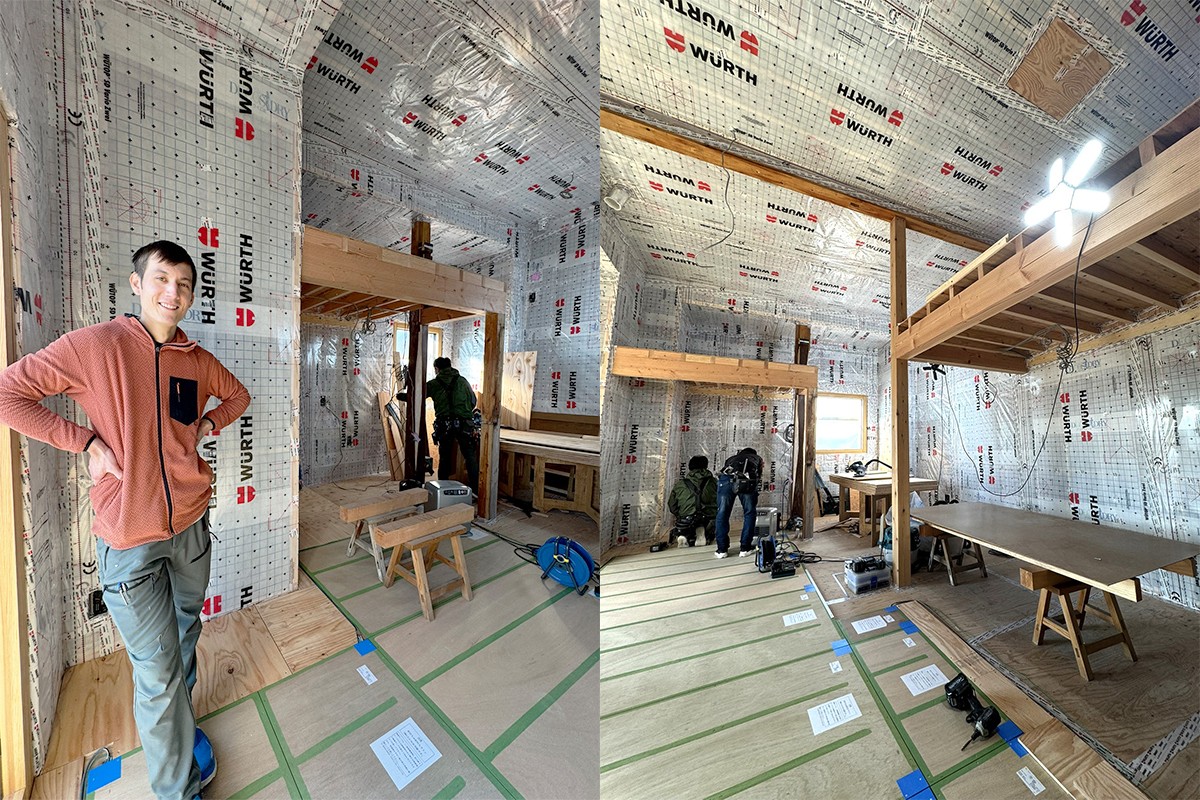
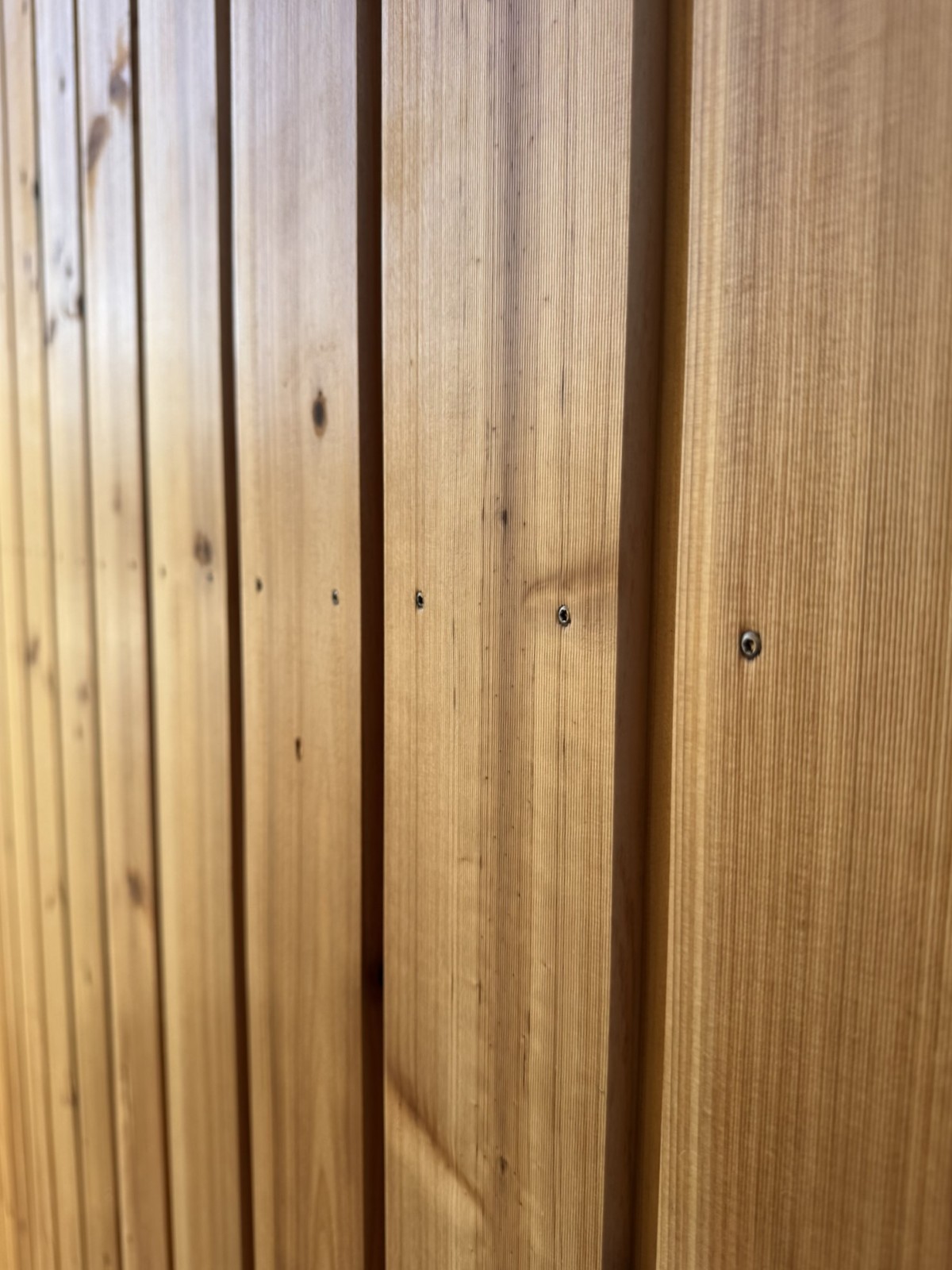
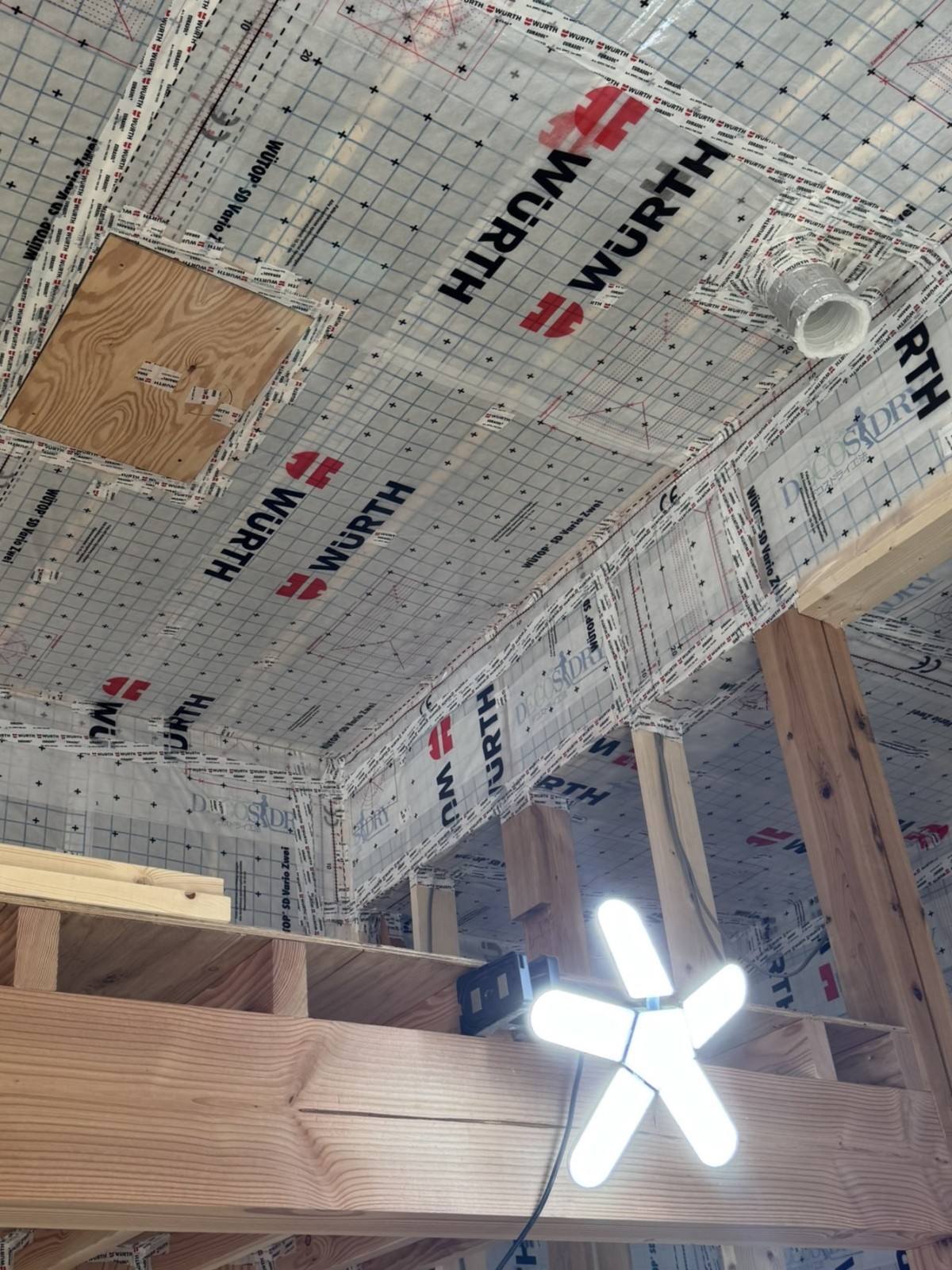
![]() インスタグラム
インスタグラム
